On this blustery morning, the bloke and I headed off to the City in order to do some walking and mudlarking with a group on the foreshore of London's river Thames. This morning and last night, the wind was howling so we were not sure if the walk would be cancelled or not. It wasn't, so we made our way into central London. The walk was led by Thames Discovery, who are a group who record archeology and history of the river and its finds.

The meeting point was an area that I am all too familiar with because I worked only a couple of buildings away for nearly two years, and the pub was the one I would frequent with colleagues because it was the closest one and there's not a lot of choice for pubs in this area. The pub is known as "The Banker", and I suspect that many people who have worked in this part of London do know of it. The stairs to the foreshore are literally right next to the pub.
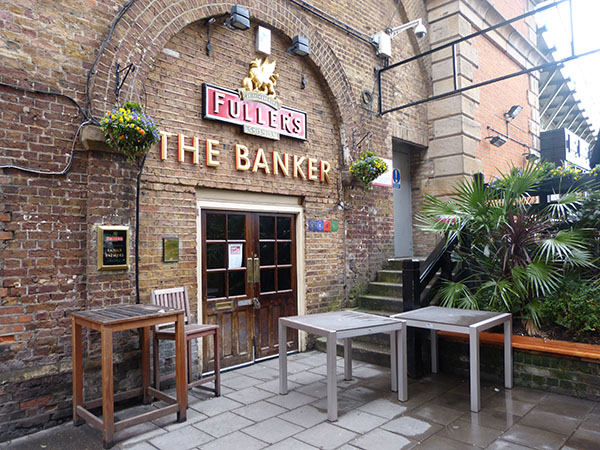
After a health and safety discussion, we descended the stairs to the foreshore.

We were shown a few items along the river and were told the importance of preserving the brickwork to hold the walls up. The group of archeologists is currently recording some brickwork on the wall closer to the modern day London Bridge where the walls were constructed at different times and were boundary lines. In many places, it's easy to spot where the brickwork finishes or a different colour of brick is used in order to determine these boundaries, so they were mapping that out.
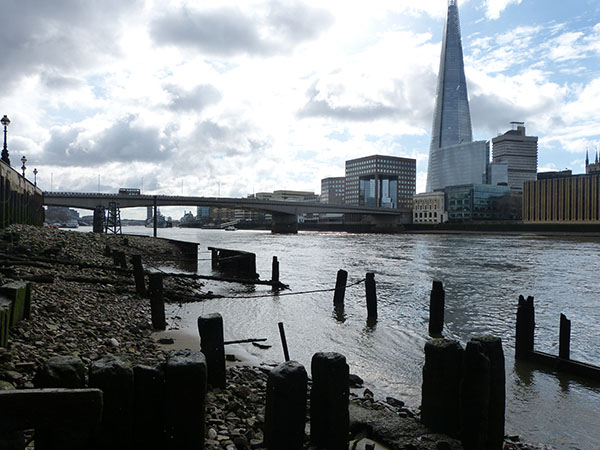
We were shown a drain, made of what looked like carved stone, and also the remains of a wall to keep the river back. At some point, this will need to be repaired before it damages the main wall. This section between Cannon Street Bridge and London Bridge is very damaged.
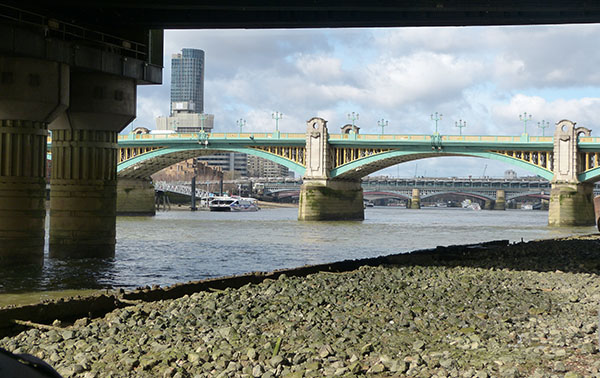
Not long after we descended, the weather became sunny, and we did not feel the wind here.
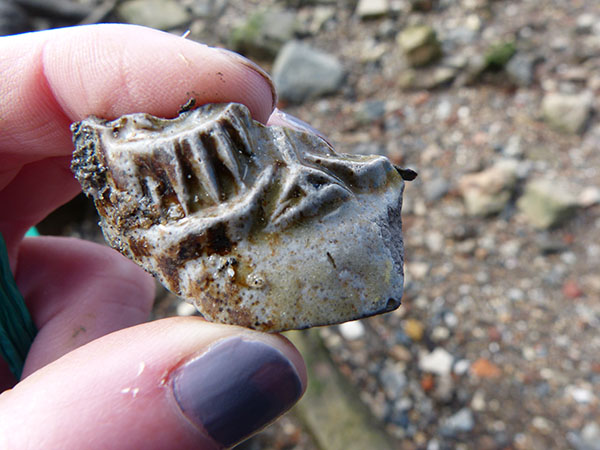
Everyone started to look for pottery and other items. In the past, I looked at a couple of websites so could date a couple of pieces (medieval green pottery shards and, of course, the more modern-day ceramics), but it was good to confirm this and to have the other pieces dated by the expert. The bloke found a Bellatine jar piece, which we were told was from Germany.
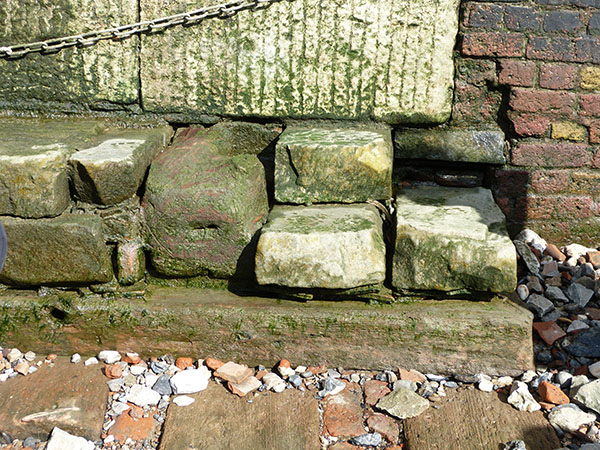
We were shown an area that had a set of stairs suspended on the wall above us, but the pair of steps on the ground of the foreshore would have been too steep and must have come from an earlier staircase. The brickwork was then examined to be from different periods, and they needed to use guess-work and educated guesses to determine how the site was developed. In addition, a couple of hundred yards away, is an area with different types of brick and block. The archeologist thought that the larger white bricks were possibly re-purposed from an older building as it matches other bricks near the Tower of London.
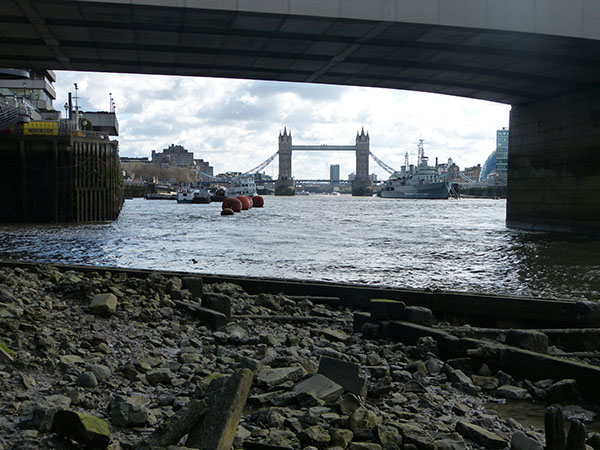
The foreshore wandering took place between Cannon Street and London Bridges. There's a dock in use on the other side of Cannon Street bridge, so you cannot go further along. Just before the modern London Bridge is where the foreshore ends. I asked about the medieval London Bridge and how it is a pity that no one could look for anything there as there must be a lot of items dropped from the bridge. Apparently, they did a lot of artefact-hunting when they built the new bridge. The lower parts of the medieval London Bridge can be 'seen' by looking at the waves. The water is a little choppier there. In the photograph above, the location of the buoys is where the old London Bridge would have been.
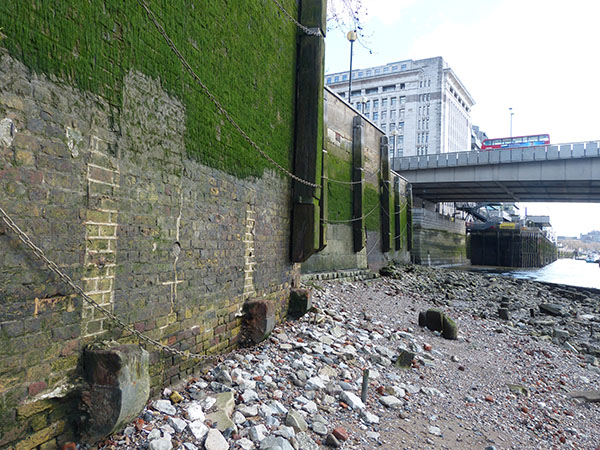
In the above photograph, these were the walls being examined to see when they were built and to mark off property lines.
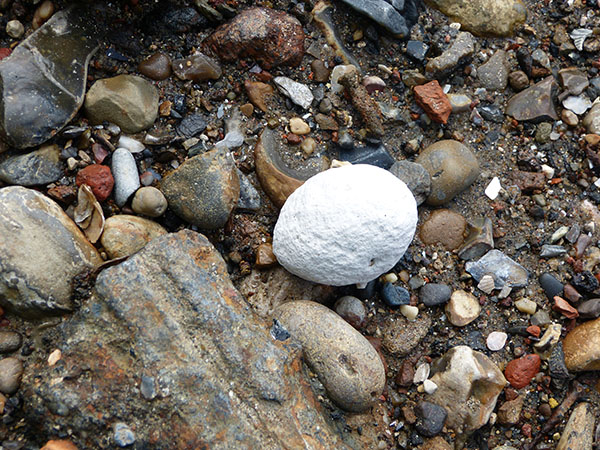
I spent a lot of time looking at the ground where we could see all sorts of items - industrial by-products, shells, chalk, stones, pieces of brick, clay, animal bones (and possibly human bones), metal work, glass, pottery pieces, animal teeth, flint, nails, gemstones, and so on. Common finds included pieces of broken clay pipes and pottery. We also found newer glass as well as older/thicker glass that we were informed changes into a range of green-blue-florescent colour when it starts to break down. Pottery comes from different eras - Roman, medieval, Delft, 1800s, Victorian and modern. The highlight was discovering garnets and metal pins.
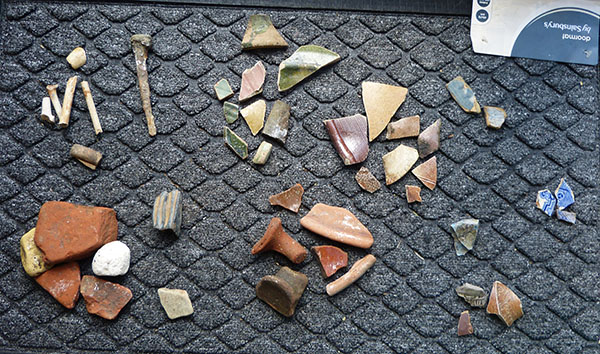
When I got home, I photographed the pieces that I took away. I found some clay pipe stems (top left), a nail that was probably used in a boat (top left), medieval green pottery (the topmost piece being the oldest piece dating from the 1400s and not glazed particularly well), brown pieces from the period after, Delft (top right blue), modern (thin blue), some random bricks and stones (bottom left), a large animal tooth (probably a horse), some clay and clay handle for a pot), a piece of glass, and some additional pottery pieces from the 1800s and 1900s. (I read somewhere that animal bones were thrown into the river when the animals were butchered or the horses died; we were also told today that bones were used as filler to built up the bank.)
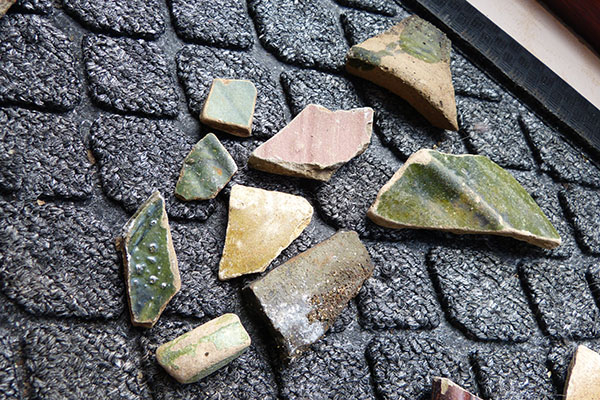
The range of medieval green pottery is above.
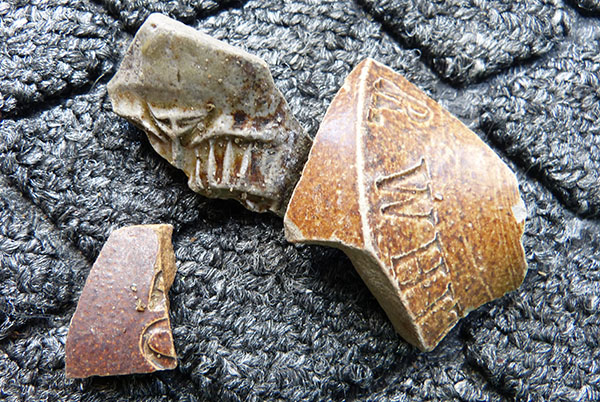
The bloke found two really nice pieces of pottery - the German pot already mentioned and shown in a photograph and R. White's (of the lemonade and soda fame) stoneware bottle fragment.
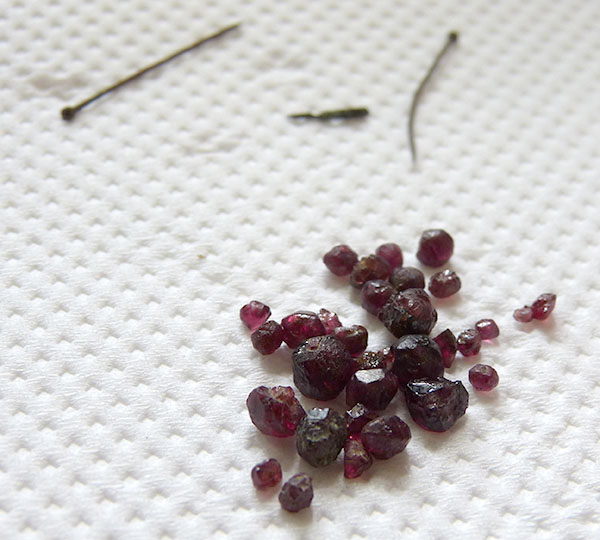
Last but not least, I managed to wash off the garnets that I discovered, and these came with some pins. Apparently, many of these garnets can be found in the same area on the river, and they range in different sizes. They're not great quality of gem, though, and they've been cut crudely. No one knows why there are so many of them, but it could be that ther were sewn into clothing. As they were all found in one place, they may have been inside cloth bags that have now degraded, or perhaps they were on some cloth. I also came across this article (1), written by the lady who conducted our walk, and she mentions that the stone is thought to have protective powers. In reading upon Thames history in the past, I know that the most common crossing was by water because London Bridge was the only way across, and it was so congested (and probably more expensive). There were boats that would ferry people across from one side of the river to the other, but it was dangerous to do this. There was a lot of river traffic and strong currents. Perhaps the stones were sold as 'good luck' charms before people got into the boats. I also read (2) that the stone was regarded in Greece to keep children from drowning, so perhaps little bags of these pinned shut were bought by the parents for their children.
I am sure we will never really know their purpose, but I would have loved to have seen how they ended up in the river or see what London was like during the different periods in history.
If you are interested in mudlarking or the Thames and want to take part with the group of others, then visit Thames Discovery's Twitter page at https://twitter.com/@ThamesDiscovery and drop them a message to find out how to get involved. They are doing more foreshore walks in the coming weeks to Greenwich and Rotherhithe, and each of these areas will have different importances and finds.
1) http://www.thamesdiscovery.org/frog-blog/thames-gems
2) http://www.jewelsforme.com/garnet-meaning
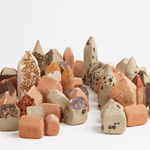

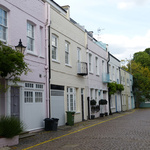
Leave a comment